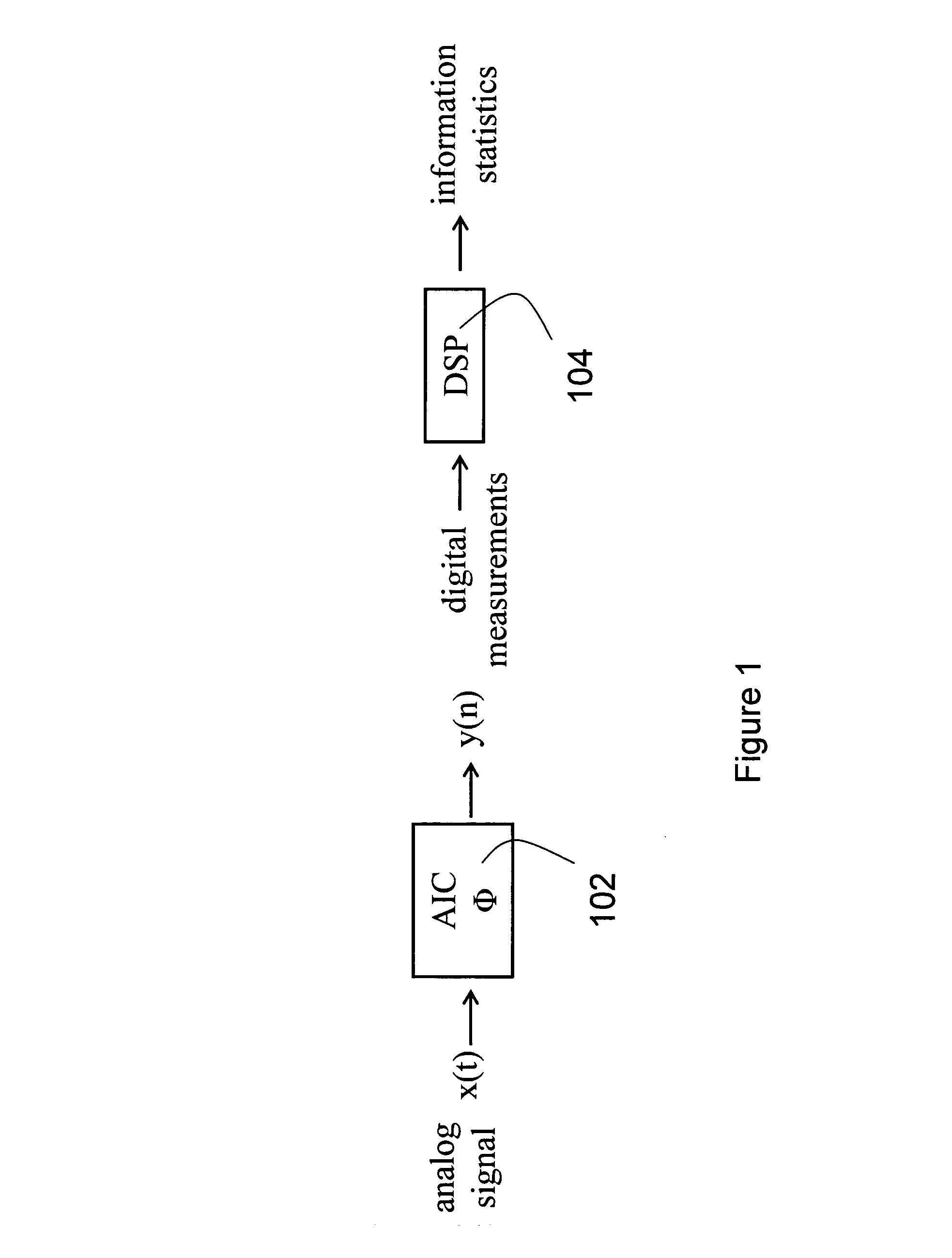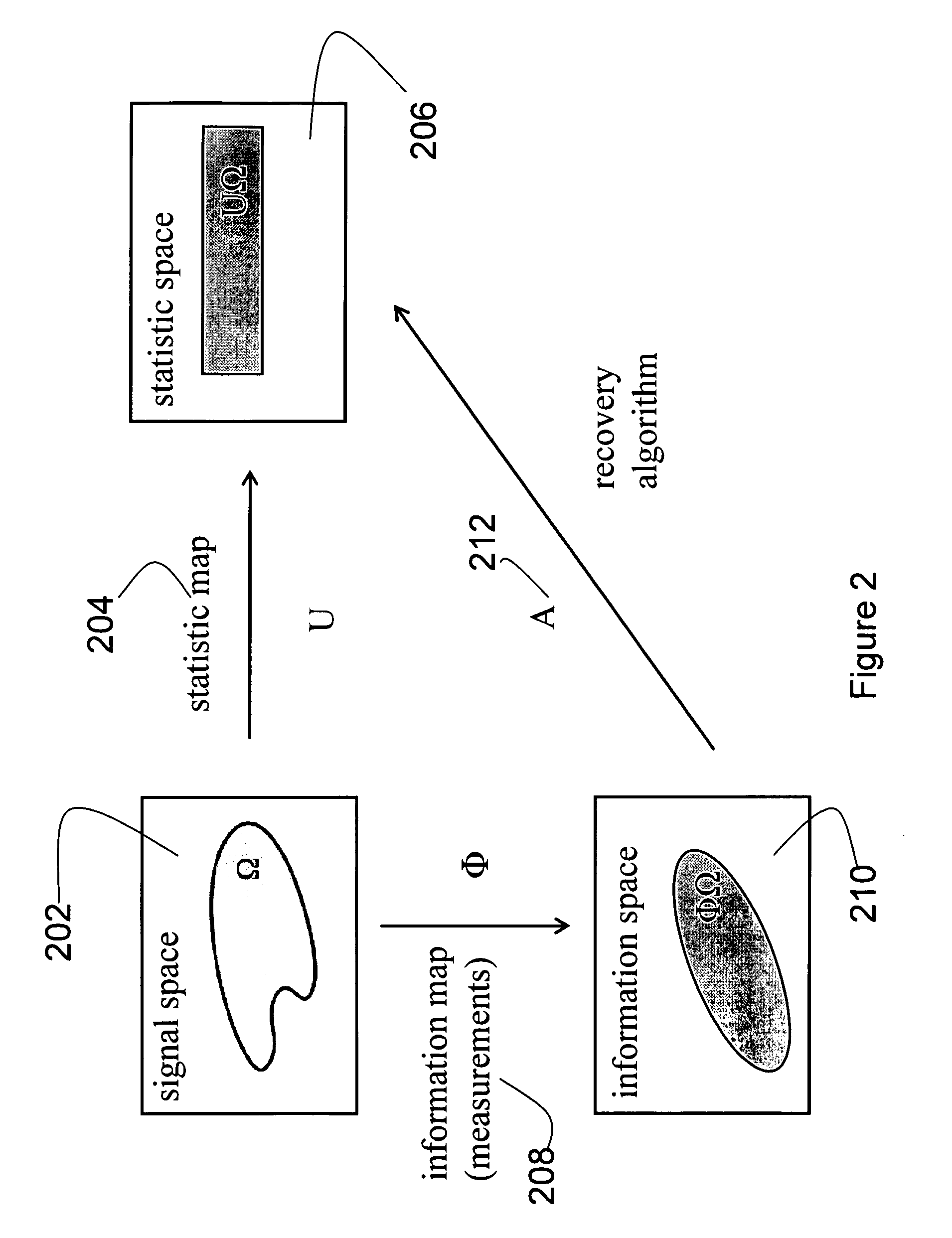Method and apparatus for on-line compressed sensing
a compressed sensing and compressed signal technology, applied in the field of method and apparatus for signal detection, acquisition and processing, can solve the problems of not present a ready-made solution for systems with an analog front end, the bit will not necessarily come from quantized uniform samples, etc., and achieve the effect of reducing the number of measurements and increasing system performan
- Summary
- Abstract
- Description
- Claims
- Application Information
AI Technical Summary
Benefits of technology
Problems solved by technology
Method used
Image
Examples
example implementation
4.2.5 AIC 2: Example Implementation
[0214]To demonstrate the AIC 2 system previously described, we examine the system implementation shown in FIG. 12. The multiplier 1202 modulates the input signal with a ±1 sequence coming from a pseudo-random number generator. The random number generator is implemented using a 10-bit Maximal-Length Linear Feedback Shift Register (MLFSR) 1204. Then the output from the multiplier is fed to the integrator 1206 for a second manipulation stage, with its output sampled by a low-rate ADC 1208 to obtain the low-rate representation of the information. The MLFSR has the benefit of providing a random sequence of ±1 with zero average, while offering the possibility of regenerating the same sequence again given the initial seed. This feature allows the decoder to re-generate the pseudo-random sequence in the reconstruction algorithm. The MLFSR is reset to its initial state every time frame, which is the period of time that is captured from the simulations and f...
PUM
 Login to View More
Login to View More Abstract
Description
Claims
Application Information
 Login to View More
Login to View More - R&D
- Intellectual Property
- Life Sciences
- Materials
- Tech Scout
- Unparalleled Data Quality
- Higher Quality Content
- 60% Fewer Hallucinations
Browse by: Latest US Patents, China's latest patents, Technical Efficacy Thesaurus, Application Domain, Technology Topic, Popular Technical Reports.
© 2025 PatSnap. All rights reserved.Legal|Privacy policy|Modern Slavery Act Transparency Statement|Sitemap|About US| Contact US: help@patsnap.com



